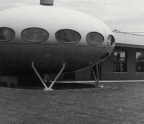
The following selection is from Obreros Unidos: The Roots and Legacy of the Farmworkers Movement, which will be released this summer by the Wisconsin Historical Society Press. As a young man, Jesus Salas and others led a historic march from Wautoma to Madison to demand that lawmakers address rampant violations of Wisconsin’s minimum wage laws and housing codes. Inspired by César Chávez, these young labor leaders founded Obreros Unidos—“Workers United”—to fight for fairness and respect, as well as to provide much-needed services to migrant families. The impetus for this work was Salas’s experiences growing up in a migrant worker family, traveling between Texas and the Midwest yearly to work the harvest. In this excerpt, he describes the brutal working conditions and overcrowded labor camps experienced by the Mexican American and Tejano workers, including his family, who fueled the Midwest’s agriculture industry.
Although we worked in many states, my family had a strong and long-standing connection to Wisconsin in particular. Going to el Norte (the North) meant going to Hartford. My grandfather had shown my father how to get to Chicago in the late 1930s and had told him that he had heard Milwaukee was just as bountiful in work and a better place to live than Chicago.
My father and his friend Panchito Rodriguez, and others, had started migrating to Hartford for work in the late 1930s as bachelors. By the 1940s, both Panchito and my father had married and brought their wives to Wisconsin. My oldest brother, Manuel, was born in our hometown of Crystal City, Texas, in 1941, shortly before the attack on Pearl Harbor, and my parents took him to Wisconsin as an infant in 1942. My second oldest brother, Teofilo, whom we called Carlos, was born that October in Hartford. I was born on December 25, 1943, in my grandmother Beba’s bed in the home that my grandfather Teofilo had built after his arrival in 1906. My three younger brothers also were born in Crystal City: Rodolfo (“Rudy”) in 1946, Francisco in 1948, and Luis in 1950.
Whether because of the cold weather, World War II, or the fact that both of their mothers were still




